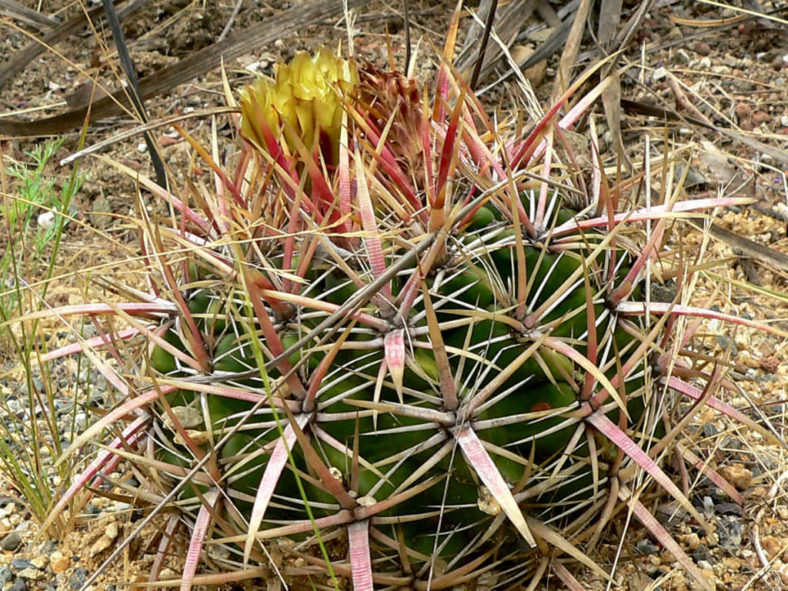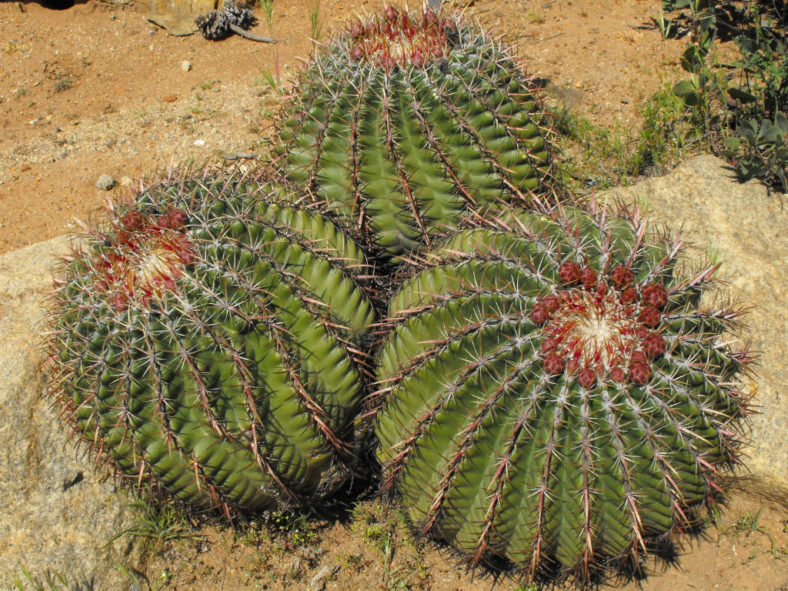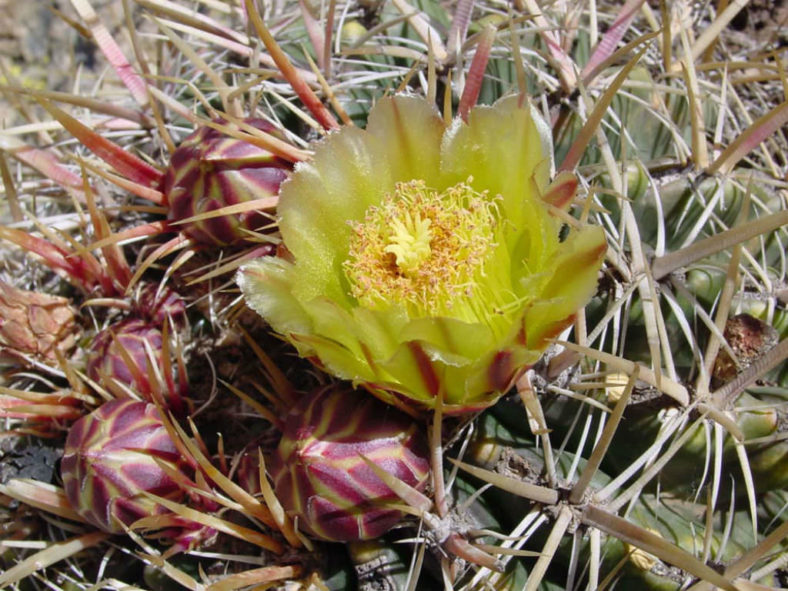Scientific Name
Ferocactus viridescens (Torr. & A. Gray) Britton & Rose
Common Name(s)
Coast Barrel Cactus, San Diego Barrel Cactus, Green-Stem Viznaga, Keg Cactus, Small Barrel Cactus
Synonym(s)
Echinocactus viridescens
Scientific Classification
Family: Cactaceae
Subfamily: Cactoideae
Tribe: Cacteae
Genus: Ferocactus
Etymology
The specific epithet "viridescens" (pronounced "veer-ih-DES-kens") means "greening (becoming green), greenish" and probably refers to the greenish-yellow flowers of this species.
Origin
Ferocactus viridescens is native to the southern United States (California) and Mexico (northern Baja California).
Description
Ferocactus viridescens is a cactus with a solitary, bright green, depressed-spherical to cylindrical stem with 13 to 34 ribs, shallowly notched immediately above each areole, and covered in arrays of long spines. The stem can grow up to 14 inches (35 cm) tall and 18 inches (45 cm) in diameter, and is usually wider than tall. Each areole bears 4 central and 10 to 20 radial spines, all pink or yellowish. The central spines are straight or slightly curved and narrowly elliptic in cross-section, measuring up to 2 inches (5 cm) long, while the radial spines are irregularly spreading and can grow up to 0.8 inches (2 cm) long.
The flowers are greenish-yellow, sometimes with reddish-brown mid stripes, and appear in spring and early summer. They are funnel-shaped and can reach a length of 2 inches (5 cm) and a diameter of 2.4 inches (6 cm). The fruits are barrel-shaped, bright yellow, rarely reddish, and can grow up to 1.4 inches (3.5 cm) long and 1 inch (2.5 cm) in diameter.

Hardiness
USDA hardiness zones 9b to 11b: from 25°F (-3.9°C) to 50°F (10°C).
How to Grow and Care
Choose a location that receives direct sun during all or most of the day. Plant your Barrel Cactus in early spring before new roots begin to form. The roots may appear dry, which is typical before new growth begins. Dig a hole deep enough for the plant's roots and amend it as needed to provide fast-draining soil. A good soil mixture includes 10 percent native soil, 45 percent washed sand or pumice, and 45 percent compost.
Water the cactus at planting time to anchor it into the soil. Water again only if the weather in your area is unseasonably dry and if normal spring or winter rainfall doesn't occur. Ferocactus need a dormant period with dry soil during the winter.
Learn more at How to Grow and Care for Ferocactus.
Links
- Back to genus Ferocactus
- Succupedia: Browse succulents by Scientific Name, Common Name, Genus, Family, USDA Hardiness Zone, Origin, or cacti by Genus
Photo Gallery
Click on a photo to see a larger version.

